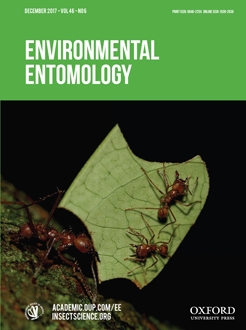Exyra ridingsii (Riley) (Lepidoptera: Noctuidae) is a moth whose obligate host is the pitcher plant Sarracenia flava (L.) (Nepenthales: Sarraceniaceae). The entire life cycle of the moth is completed in the trumpets of this fire-dependent plant that is found throughout the southeastern United States in bogs, long-leaf pine savannas, and pocosins. The purpose of this study was to determine the effects of E. ridingsii on S. flava, including the effect of herbivory on trumpet height in the year subsequent to feeding and whether moths select trumpets for oviposition based on height. Although most forms of herbivory by insects might be expected to have negative effects on plants by reducing photosynthetic abilities, it would be counterproductive for herbivory by E. ridingsii to negatively affect S. flava as this plant is the only possible habitat for E. ridingsii. At each site in selected quadrats, the number of trumpets, trumpet height, trumpet status, number of trumpets in a clump, and number of clumps were recorded. The relationship between height and herbivory was analyzed using a linear model, and a positive correlation was found between height and herbivory. E. ridingsii herbivory had no effect on the next year's growth of S. flava based on a Spearman's correlation. Therefore, we concluded that E. ridingsii has little effect on S. flava populations and has likely evolved to selectively avoid herbivory on more vulnerable, smaller plants.
How to translate text using browser tools
4 November 2017
Effects of Exyra ridingsii (Lepidoptera: Noctuidae) on Sarracenia flava (Nepenthales: Sarraceniaceae)
Christine A Ricci,
Albert J. Meier,
Ouida W. Meier,
T. Keith Philips
ACCESS THE FULL ARTICLE
It is not available for individual sale.
This article is only available to subscribers.
It is not available for individual sale.
It is not available for individual sale.

Environmental Entomology
Vol. 46 • No. 6
December 2017
Vol. 46 • No. 6
December 2017
Exyra ridingsii
preferential herbivory
Sarracenia flava




